-
Posts
774 -
Joined
-
Last visited
-
Days Won
80
Content Type
Profiles
Forums
Events
Shop
Posts posted by EdwardMarlowe
-
-
4 hours ago, randythoades said:
Nice thing about a Strat mod using a whole new guard is that you can also retain the option of very easily reverting to standard if you want to (or, indeed, if you're certain that won't be an issue, sell the original plate complete and wired in order to fund the new version....). -
On 15/11/2023 at 10:38, Crusoe said:
Strange one... I've been learning the Riverboat Song and having trouble getting the rhythm and speed of the solo right (I can play it in isolation, but not with the backing track). I was playing the TE-62 last night and just couldn't get it. Hands were sweating, fingers sticking to strings, just nothing working. I switched to the Ibanez and it was much better.
I've had similar experiences. The feel (sometimes even the look - all psychosomatical...) of a different guitar leads me subconsciously to play in a different way or to play different things... By extension, I suspect that different things just feel 'right' on different guitars... What was it recorded on originally, do you know? Something with a similar neck shape (so it - irrespective of the player - 'feels' better on the type of neck / guitar feel it was written / recorded on... Not sure I'm articulating that so well, but you know what I mean?-
 2
2
-
-
On 15/11/2023 at 13:29, Dad3353 said:
The knobs closest to the neck are the volume controls for each pickup, the lower two are the tone controls. Try all the combinations of pickup/tone to see which best suit the song or style you're playing. Typically, the neck pick-up on its own will give a smoother, more 'soft jazz' tone, the bridge pick-up alone will be sharper, with more 'bite'; a combination is easily 'dialled in' by messing about with all of the controls. There are no rules; just listen with your own ears and create the sound you want. Hope this helps.

Douglas
Sounds like standard LP-type wiring?-
 1
1
-
-
Yeah, if you want it to look standard but only use the neck pickup, I don't see any need to rewire at all. I'd only get into that if - as randythoades says - you wanted to only have the one pick-up on there, make it a feature. If you want to keep the standardised Strat look, I just don't see any advantage to doing any rewiring here (aside from switching in your preferred choice of pup).
-
 1
1
-
-
Early days. I gather there's a bit of a collector's market for those early pieces. Still have (though it's at my folks' house back in the old country, got to be sold in the Spring) my old Tanglewood bowlback, which I believe was Cort-made in Korea. Paid £189 back in 1994 for that one. Bought a TW15NS (the dreadnought model, all-solid) back in 2002/3. Hanging on to that one - nice guitar. I think that was after they'd switch to Chinese manufacture, and the buzz around them started to grow. Their early electric could be quite nice, too, though afaik they've all but given up with the electrics as it's as an acoustic brand that they really hit.
-
Also occurs to me that there's a question to consider - is it the lived sound or the studio sound you're wanting to replicate? I know Jimi used pedals both live and in the studio, but it always seemed to me as best as I could make out at a historical distance that he was *somewhat* more reliant on the amp's own sound live as opposed to the studio - even if he did cane it in the studio as well.
Fun fact: according to the Hendrix bio Eddie Kramer co-wrote (from memory that's where I read it), Jimi's doctor told him a few months before he died that if he didn't turn down the volume, he'd be stone deaf in two years. -
On 13/11/2023 at 16:28, EliasMooseblaster said:
I guess it's the same approach most Blues players take with Tube Screamer-style ODs: dial the Drive right down on the pedal itself, set the amp close to break-up point, then control the level of clipping with your guitar's volume pot.
Pretty much. I'm not much knowledgeable about SRV, but my understanding is that's what he did, with Hendrix being a big influence on him. -
On 14/11/2023 at 07:34, police squad said:
I did the upside strat many years ago. Sounded great but upper fret access was terrible. Sold it to a lefty handed mate in 1990 and he still uses it now
Works for me - I've never been much inclined to play above the 15th fret or so anyhow.... My very marked preference for a 21 fret over a 22 is purely aesthetic.
-
3 hours ago, Dad3353 said:
Contact these folk (they're in the UK...); their 6-way blade switch looks like it'll fit the bill...
Hope this helps.
Douglas
Thanks, I'll look into their line.Best
-
 1
1
-
-
2 hours ago, Dad3353 said:
Ha..! The way I play guitar, any guitar, it's instantly recognisable as 'my own', however 'distinctive' it may be..! Fat chance of being taken for Brian May, using a 'Red', still less Hendrix with a Strat, or Alvin Lee with a 335..! Quality will out, and those players have qualities that I do not. I stand out in any crowd of players; just maybe not for the right reasons..!

I know how you feel! I shied away from Hendrixing a Strat for years because those comparisons would..... not be flattering.... now for that very reason I'm tempted because there's no way anyone could accuse me of sounding like him.
-
 1
1
-
-
That's fun. The challenge with such a distinctive instrument is making it your own; going for such an atypical colour can, imo, help with that.
-
 1
1
-
-
Depending on budget, I'd also consider the (very affordable) Harley Benton range from Thomann. £350 would buy you both a ST-62 and a TE-62, letting you try at a relatively small outlay both classic types. (The only proviso here being that they are a much flatter fingerboard radius than an actual Fender, but that probably won't make a significant difference to a new player.)
Comfort-wise, tbh I don't notice a significant difference between a Strat and a Tele body, but I find I markedly prefer a rounder neck profile and a narrower nut. I've sold a couple of guitars over the years because I ultimately didn't like that very 80s wide/shallow/flat thing. Great for shredders, but I'm not that sort of player. -
I'm looking for a wiring diagram for a Strat for a three-way switch instead of a five.... but not the conventional wiring.
Realised recently all I really use on my old Strat are positions 2 and 4, and I wish it had the option for neck and bridge together. Considering picking up a HB ST62 to experiment with, and wiring it for three positions: neck and middle, neck and bridge, middle and bridge.
Anyone ever seen this done?-
 1
1
-
-
12 hours ago, Dad3353 said:
Fixed.

STOP....
http://madisonchasefitness.com/wp-content/uploads/2011/12/MC-Hammer.jpeg
GRAMMARTIME!-
 1
1
-
-
On 15/09/2023 at 00:45, Neddy said:
Was in the studio and had a near broken-up marshall jtm into a jhf1 Dunlop fuzzface with my single-coil tele.
It got the Hendrix sound perfectly. So now of course I want a fuzz face but am not too keen on the jhf1 as it has no 9v power supply.
What would get the hendrix tone better, a hendrix mini fuzz face (ffm3) or the band of gypsies fuzz face (ffm6)? Cheers

Eh... well, which Hendrix fuzztone do you want? Jimi used a few different ones across different albums. Worth narrowing down which exact tracks using fuzz are what you're after. Andertons have a decent blog on the general Jimi sound here - https://blog.andertons.co.uk/sound-like/sound-like-jimi-hendrix - though it's not much help on narrowing down the fuzz if it's a very specific one you're after.
If you want to experiment with a range of different Big Muff sounds (Jimi used an EH Big Muff later on - I think from memory Band of Gypsys era?), the Mosky Big Fuzz might be worth a try - several different variation on the BM sound in one box - https://guitarmetrics.com/products/mosky-big-fuzz-guitar-effects-pedal
If budget is not an issue, go straight to the source: https://www.roger-mayer.co.uk/rockets.htm Roger Mayer was Jimi's studio guy and personally work on / modded all Jimi's pedals. These are a step up again in price from anything labelled with Jimi's image, however if you really want a very specific Hendrix fuzztone (as opposed to a general 'sounds like Hendrix' approach), imo you'll be a lot more certain of getting it with this for a bit more money than the many Jimi pedals that to my ears don't sound massively different than any other, generic sixties fuzz sound -at least not stripped of the context of absolutely everything else matching Jimi's gear.
If it is a more general Hendrix tone you want, though, in truth most any half-decent, Sixties-sound fuzz will do the job. The biggest challenge with fuzz I always found is taming it enough for it to be useable: less is always more. Dial it right back to basically 'clean boost' and add in from there. To my ears - ymmv - Jimi never had quite as extreme a fuzz effect going on as we often assume.
-
And here it is!!! Set up is lovely, and it was practically in tune (I will have to get used to the locking tuners). Frets feel like a tiny polish on top needed, but playing in will deal with that. Neck is gorgeous, and I love the firemist colour. Either a very, very almost imperceptibly tiny ding on the headstock, or a miniscule imperfection on the headstock finish, but that's the sort of thing it'd get in a few days' use with me, so.... Overall, a stunning piece. The gig bag is surprising good, much higher quality than I expected, and the 25th logo inside it is a nice touch.
Highly recommended. I still hope they do 5his soec in the CC colours going forward, as a DLX model.
-
 4
4
-
-
On 08/09/2023 at 20:40, drlargepants said:
I’d say yes to a point. We seem to have come a long way from the Marlin Sidewinder etc
and even those were a huge step forward in their day. There was one year when the Sidewinder markedly outsold the Squier in the UK - and Squier seriously upped their game after that. The next big leap was when Yamaha put out the Pacifica 112 with a solid wood body. Remember the ad campaign which showed the butt end of a Yamaha and a competitor (impliedly a Squier) with the paint scraped off showing the 'brand x' was ply, and the Yammy solid? Caption - "Just ask them if it's available in a natural finish" or similar... IMO, that's when Budget brands really started to step up their game.
The next big leap was when they started to aspire to produce budget instruments for the long term player, even performer - not just beginners. I see Vintage (started off as a premium version of an Encore) are now styled as "quality guitars for the working musician", and really expanding their endorsee-user base. That sort of rethinking the "budget" concept - along with HB disrupting the model to provide so much more for a lower cost to the end consumer - is really light years away from the days of the Sidewinder. (I'd love to give one of those a go now, see if they're as playable as I remember!)-
 1
1
-
-
Tanglewood are great - I've played and owned Tanglewood guitars, banjos, and a couple of their electrics at one time and another. All good stuff. The electrics were "impressive for the money" in their original 'budget brand' days, but I think they've dropped them entirely since they took off with the acoustics as of about twenty years ago. HB I hear good things about. There's also a bit of buzz about an American brand called Orchard, though I don't know if those are distributed over here yet.
-
 1
1
-
-
Nice! I've owned three acoustics in the past - two dreadnoughts (still have one, a Tanglewood) and a bowlback (also a Tangelwood; it's at my parents house in the Old Country and will be sold next Spring). I want something small, parloury - something robert johnson might have played. Got my eye on the Recording king Dirty 30s on Thomann, though also really fancy one of these:
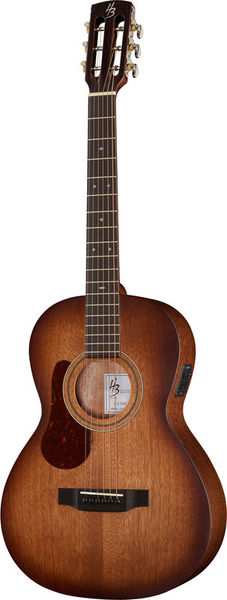
-
4 hours ago, Skinnyman said:
Santa brought me the Nux looper pedal and I’m very impressed.
So impressed, in fact, that I’ve bought the MG-30 multi-fx unit which is superb. Rock solid build and the tones it offers are excellent. The supplied patches are, as usual (looking at you here, Zoom) a bit too gainy and OTT for practical use but that’s easy enough to dial out
That's a plus if they can be dialled out... I remember back in the day when most multiFX units were like the Nokia 3210 - forty odd ringtones you were stuck with, mostly crap, and only one slot for your own....
-
 1
1
-
-
On 09/02/2023 at 14:50, Crusoe said:
I'm not sure how to get the sound, but can anyone tell me how to get my hair to look like William Reid's?

LOTS of backcombing..... or that thing with rubbing your palms on it - didn't you do that at the YM gig waaaaay back? Or was that Robert Smith you were going for then....
If anyone could tell *me* how to get hair like that now I'd be even more impressed.
-
I've gone the same way with pedals - wanted all of them, an all-singing, all dancing amp.... eventually realised I'm happiest with a decent amp that does the mostly clean thing well, then pedals for OD/boost, tremolo, reverb (if not built in to the amp), echo. Also learned along the way I don't like heavy distortion, just a good crunch - and that most of the really great sounds on record are a lot less distorted than you assume when you start....
In terms of these two, I'd be inclined to keep whichever was less replaceable. Ultimately, there are eleventy million good and inexpensive TS-808 clones out there these days if you wanted that sound again, and it sounds like that's the one you're really finding less use for.
Equally, though, a pedal takes up very, very little storage space, so if you don't need to sell it for the money, it's not the end of the world to have it in a box.... I've kept all my old pedals, even though a lot of them I'm unlikely to really use much/ at all. Boss BF-3, DOD Phasor, JD Crybaby.... The one I'm told could pull in a surprising amount of money is my Sovtek-Electro Harmonix Big MUff Pi. Bought that new back in the early 90s - mint condition, still got the wooden box. I decided to keep my pedals around, though, because even they're not part of my core sound now, I might want to play around with them someday. I don't have a lot of use for the phaser now, but I love the subtle way Steve Jones used his MXR 90 on Never Mind the Bollocks; I might pull that out sometime if I'm feeling uninspired, and... Just a thought!
-
I've not yet tried anything NUx, but I've heard a lot of good buzz about them.
For a Klon Klone, I have the Mosky Golden Horse minipedal. Paid something around £25 for it a year or two ago, a lot of fun and seems solid, though I don't gig so. They've expanded the line, the Silver Horse is the same minipedal format but has a switch to vary the 'voice', while this bigger option gives a bigger variation again - https://www.moskyaudio.com/product/product-14-436.html At the price they go for (sub £40), worth a shot... -
Just been notified my JA25th is about to ship!

-
 2
2
-


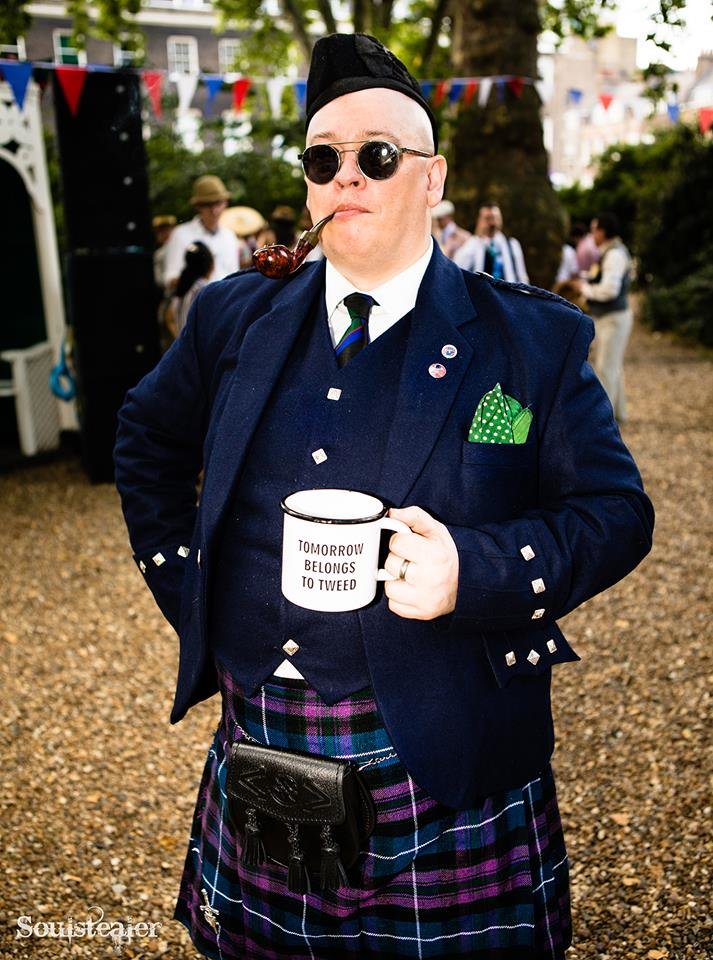
.thumb.jpg.2f0f241a63381e5644f287abacd76760.jpg)
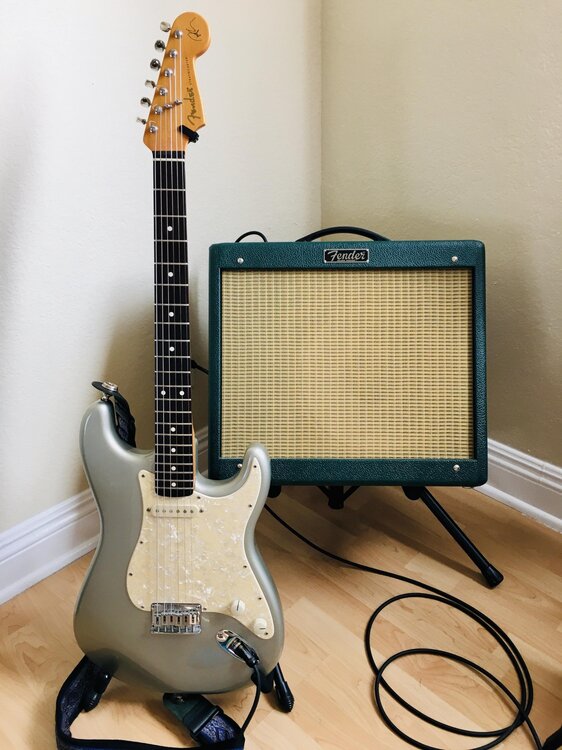
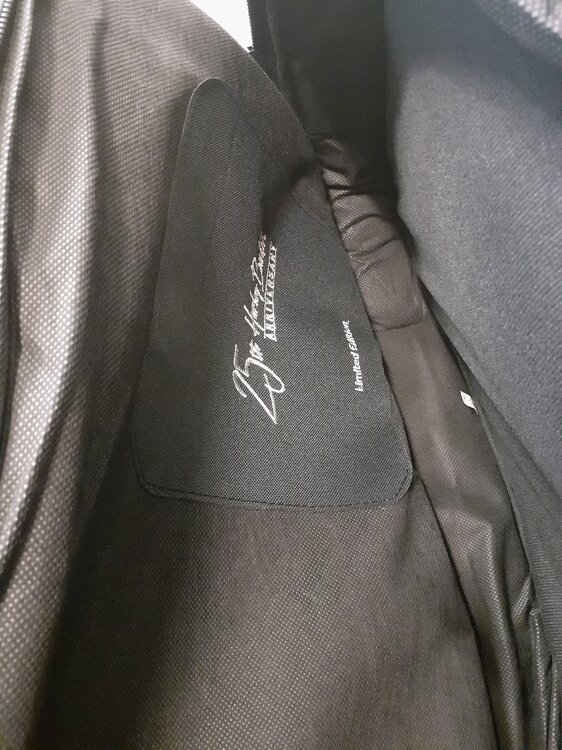
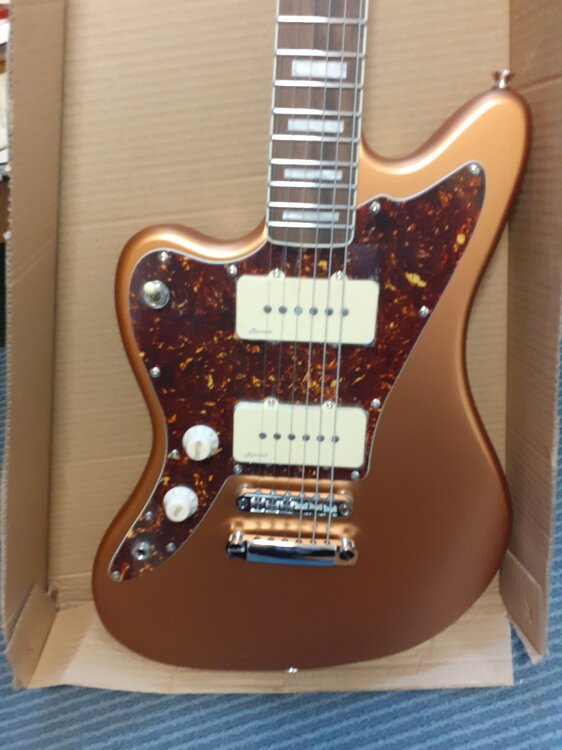
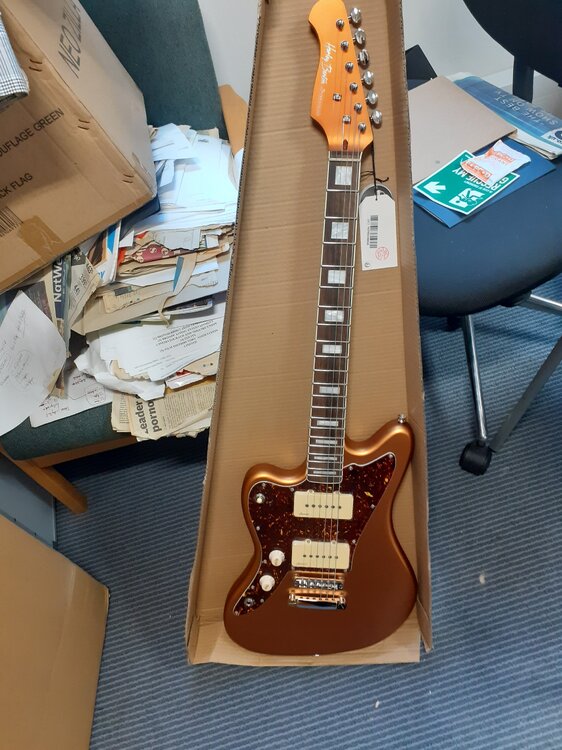
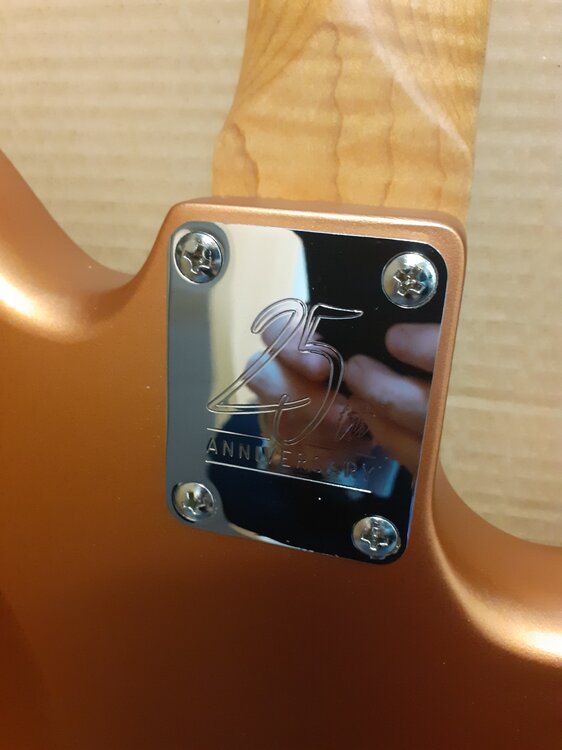
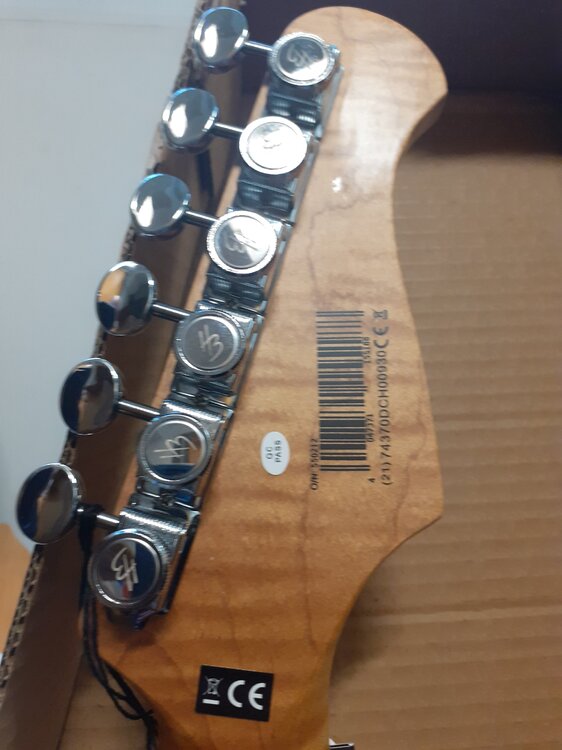
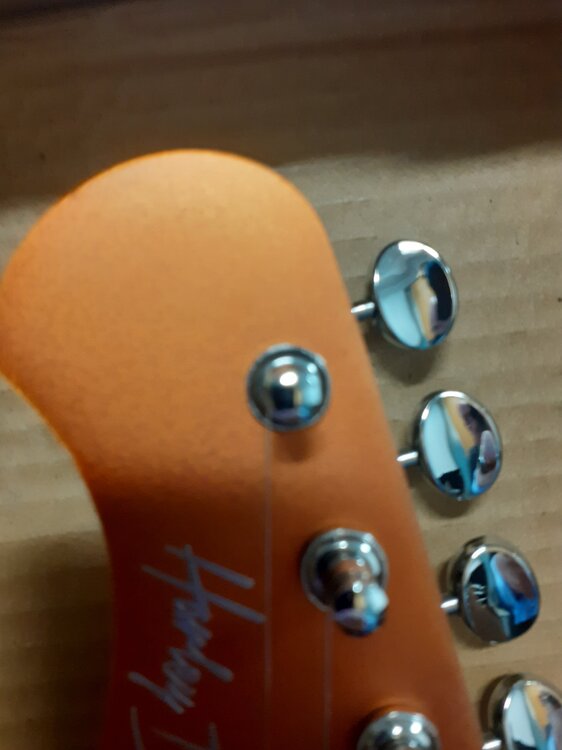
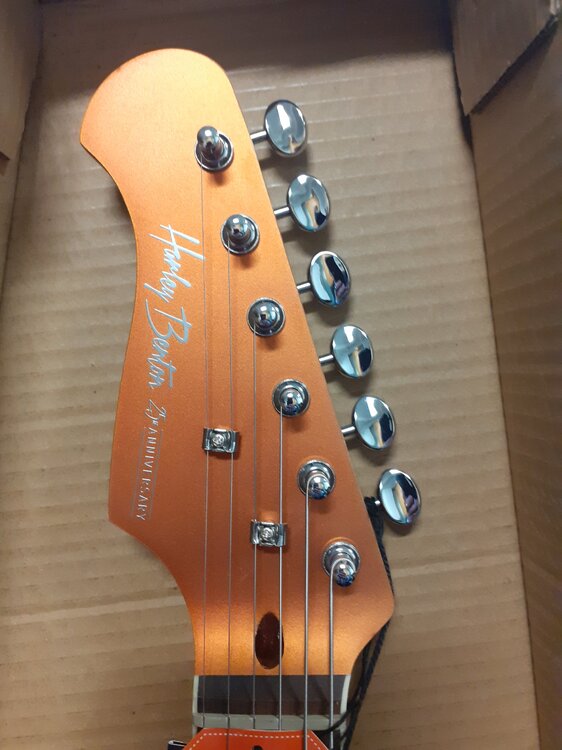
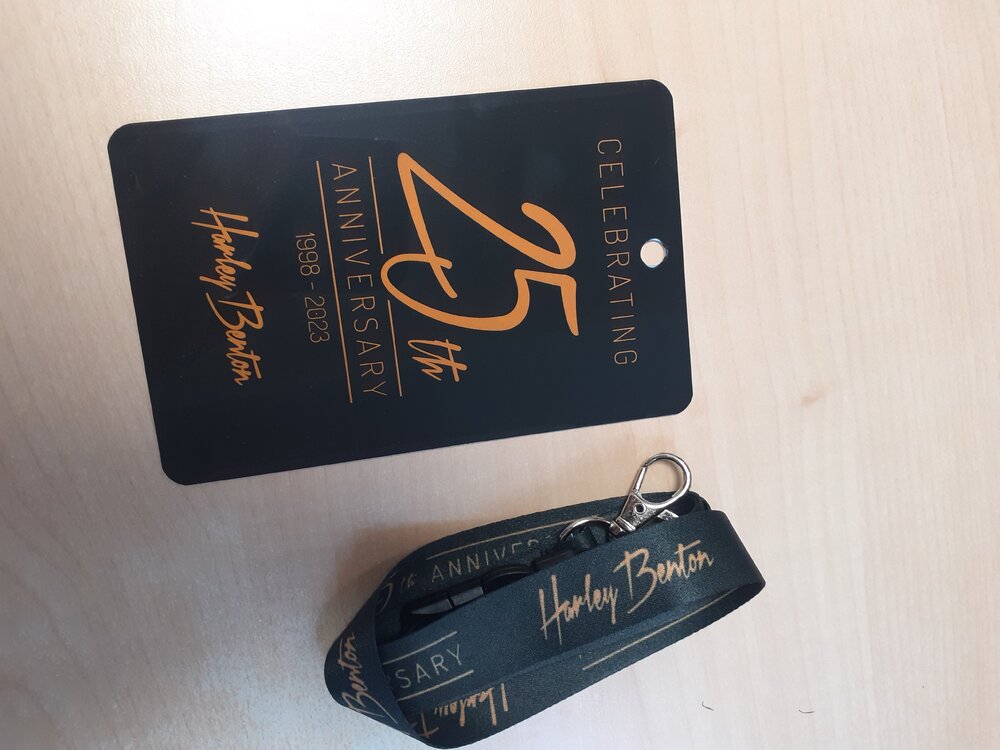
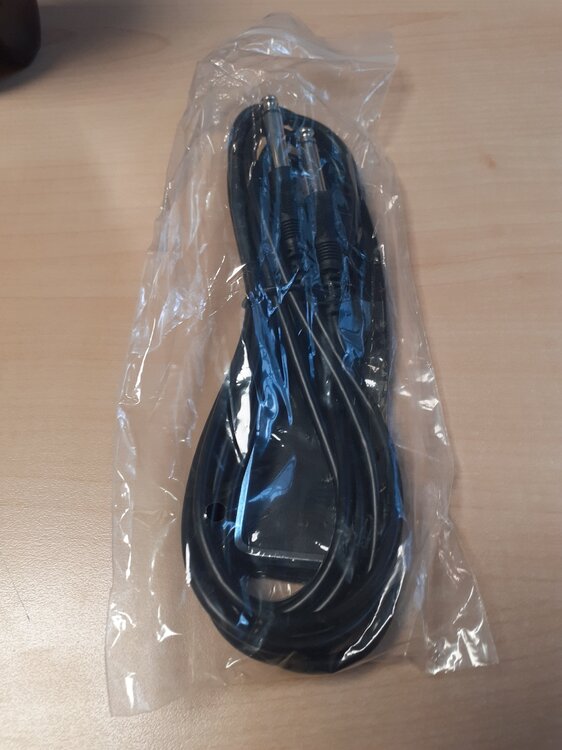
Comfiest guitar?
in Guitars
Posted
I love the look of that! Custom build? Looks basically like an Esquier but with a Strat form-factor....